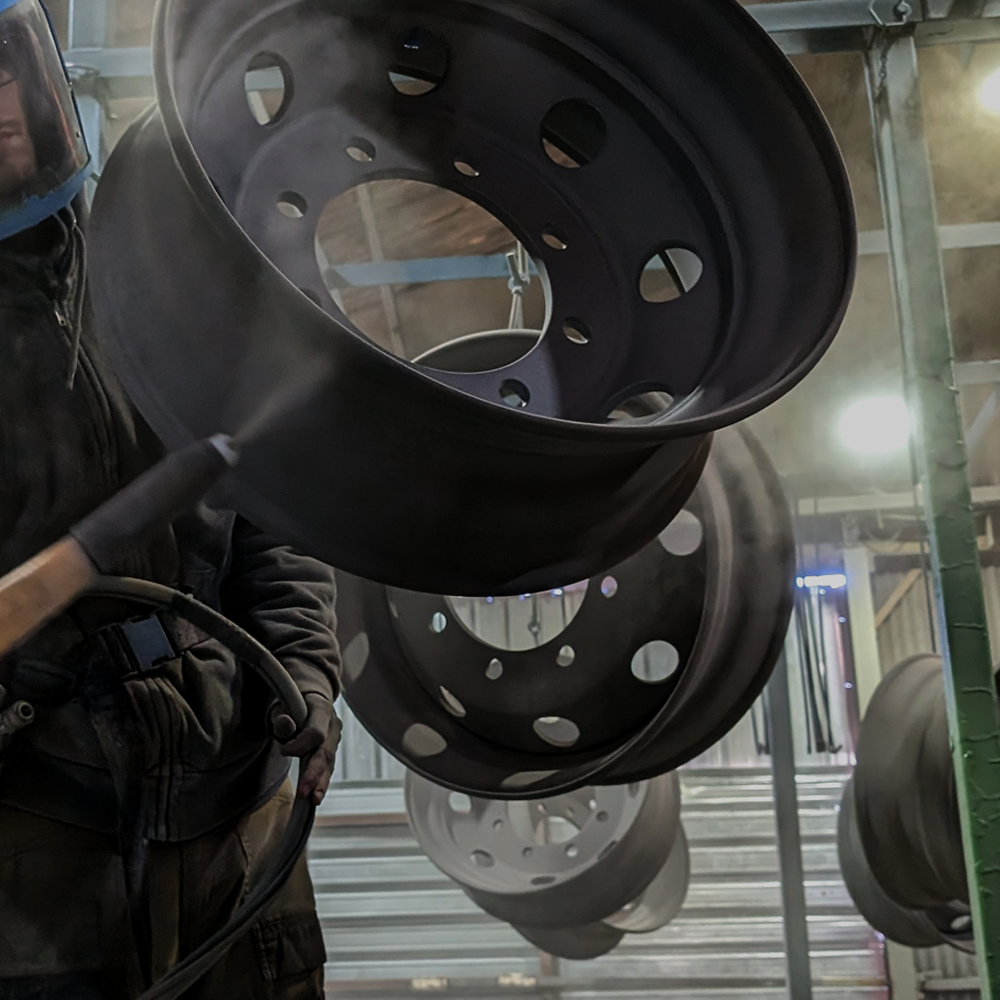When you're powder coating and things don't seem to go right, it might feel a bit overwhelming. Don’t worry, here’s a straightforward guide to help you understand and solve the typical issues you might face.
Poor Fluidisation in Powder Hopper
Let's start with a common issue: the powder in the hopper isn't flowing smoothly. This could be because the powder level is too low, the powder has become damp or compact, or there might be some clogging in the system—be it in the hoses, pump, or venturi. Sometimes, the problem might be due to the powder particle size being inappropriate or the air pressure being set too high. If the air feels moist or the material of the hoses is of poor quality, those could be contributing factors too.
To fix this, make sure the hopper is filled to the normal level. If the powder is compact, you might need to manually loosen it and check the quality of your compressed air. Clear any obstructions, use the right size of powder, and consider replacing any worn or low-quality parts. Adjusting the air pressure might also help, as well as ensuring that the air supply is dry.
Poor Attraction of Powder to the Component
If the powder isn't sticking to the component, check the voltage at your gun—this is often too low. Poor grounding or excessive build-up of cured powder on hangers can also cause issues, as can moisture in the booth air or high gun air-pressure. Sometimes the guns might just be in the wrong position.
Adjusting the voltage and cleaning the grounding points should be your first steps. Make sure to clean off any old powder from the hangers and control the forward air pressure. Repositioning the guns can also make a significant difference.
Film Thickness Issues
Uneven film thickness can be due to various factors. If the component’s coating is too thin, it might be because there isn't enough powder delivery or the coating time is too short. Damp powder or a large surface area on the hanger can also contribute to this issue. On the other hand, if the coating is too thick, you might be delivering too much powder, using too high a voltage, or coating for too long. Overheating during the pre-heat process can also lead to excessive thickness.
To manage this, tweak your powder feed pressure and clean your powder venturi if needed. Consider slowing down the conveyor or increasing the voltage and airflow to coat more thoroughly. For excessive thickness, reduce the powder feed, adjust the gun settings, and maybe speed up the conveyor or reciprocator.
Uneven and Broken Appearance Before Curing
An uneven or broken appearance before curing can often be traced back to static issues known as back ionisation, poor grounding, or simply applying too much powder. Moisture sneaking into your system or metallic particles building up in your gun could also be at fault.
Reducing the voltage on your gun can help with static. Make sure your grounding is solid and try to adjust the deposition rate and film thickness. Keep moisture out of your system and clean out any build-up in your gun regularly.
Poor Containment and Contamination in Powder Booth
Contamination in the powder booth can stem from damaged or blocked primary air-filters, overloaded secondary air-filters, large openings in the booth, improper gun position, or simply using too much powder.
Start by checking and possibly replacing your filters. Adjust the gun position and consider reducing the number of guns if necessary to minimise the powder use.
Contamination of Work-Piece Surface
If the work-piece surface is contaminated, it could be due to foreign particles from the conveyor or hangers, contaminated reclaim powder, debris from the work floor, or contaminated compressed air.
Regular cleaning of the conveyor and hangers, using only clean, uncontaminated powder, and ensuring that compressed air is clean will help solve this problem.
Gloss Issues
If the gloss isn't right—either too high or too low—it could be down to the oven settings. Low cure temperatures or short oven cycles can result in a high gloss, while high temperatures or long cycles can dull the finish. Sometimes, contamination with incompatible powders or solvents is the issue.
Adjust the air and metal temperatures, line speed, and oven settings accordingly. Make sure the pre-treatment is even and consider adjusting your chemical balance. Always ensure your equipment is clean and that you’re using fresh powder.
Understanding these common issues and how to tackle them will help you maintain a smooth and efficient powder coating process. Keep your equipment clean, stick to high-quality materials, and monitor your environment to get the best results.
Happy Powdercoating!
We are always happy to help and if you need any specific advice, drop us an email and we'll get right back to you sales@powdercoatingsdirect.co.uk

